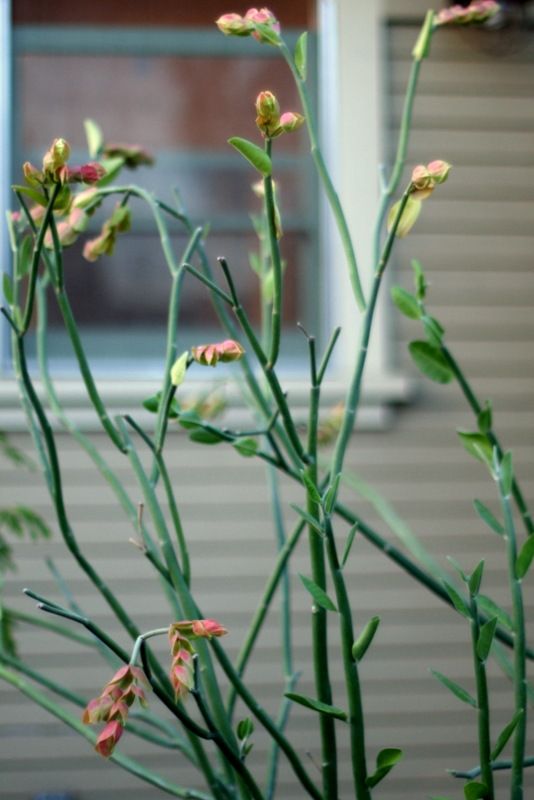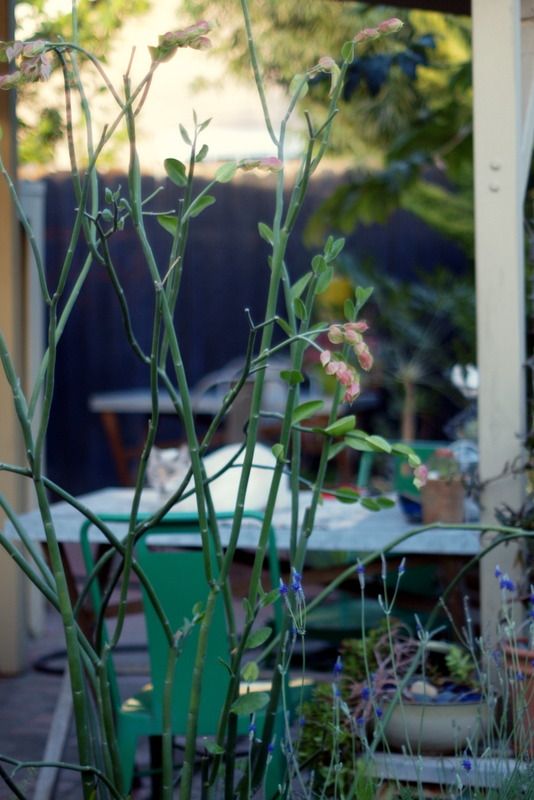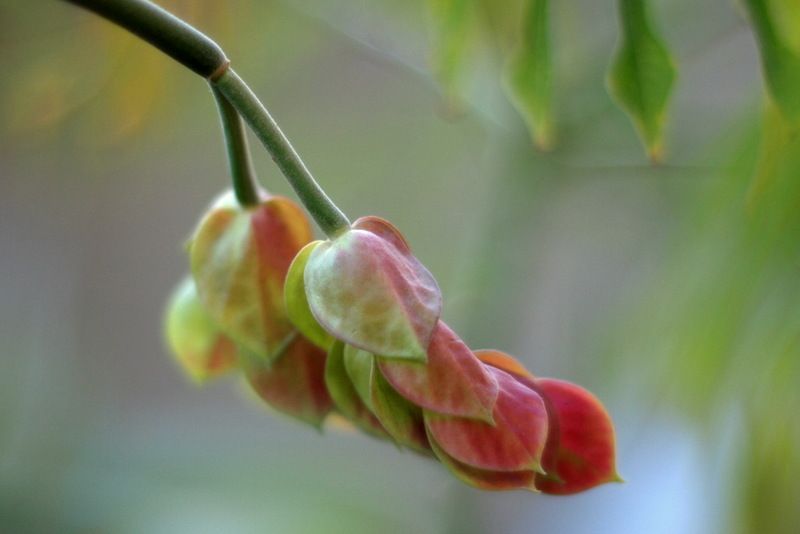One of the best things about fall is being able to dig again. Since it’s cooled down, I’ve been digging in the vegetable garden plot and can’t resist moving things around at home too, such as this tall, lanky succulent that I’ve finally planted in the back garden. It had tripled in size from when I brought it home in 2011 and plopped it, still in its nursery can, into a large pot by the east gate. It seemed to love the morning sun, afternoon shade there, so I left well enough alone. But always I’ve been tempted to try this assertively vertical succulent in the back garden, where I’d be able to see it more often. I finally got up the nerve to do it over the weekend. I knew the large pot’s tall sides were providing support for the long, 6-foot stems but didn’t realize to what extent until I had lifted the 5-gallon pot clear of the rim, and the top-heavy plant immediately fell sideways, nearly catapulting out of my arms. Amazingly, no stems were broken in getting it into the ground, and once the hole was backfilled it stopped rocking and listing. With the big container no longer providing support, the stems initially splayed out in all directions but then ultimately found their balance, arranging themselves in a vase-shaped equilibrium.

Nearly leafless, it gives a similar silhouette as an ocotillo but without the potential for injury. It’s completely smooth, thornless.

A clump of the New Zealand evergreen grass Harpochloa falx was getting overwhelmed by other plants, and after moving it I realized there might be space enough for the pedilanthus if some aeoniums and sedums were moved too. With everything cleared out, the lanky brute was able to be squeezed in among the remaining agaves, dry conditions perfectly to its liking. The pedilanthus had more than proven its drought-tolerant chops by residing in that 5-gallon nursery can for three years on a semi-forgetful watering regimen and still managing to grow over the top of the gate.
The only question is how it will manage now in full sun rather than half-day sun. I’d hate to have to move it again. I’ll revisit that question next summer.

Because of it’s height, I rarely got a glimpse of the ruddy bracts.
Now that the big pot no longer girdles the stems and they’ve relaxed downward a bit, I can enjoy the bracts in all their bizarre, shrimpy-green coloration.

I’d never heard of this one before, and I’m glad you introduced me. It seems to be perfect to provide height in the succulent garden without taking over visually. I’ll definitely look for it.
Gerhard, it’s a nice and tall, “see through” plant. I was shocked how much it weighs, though. I nearly lost control of the whole ops a few times. I need to keep a close watch on it if the wind kicks up in the next couple weeks. Its weight seems balanced but you never know.
I saw this plant a month or so ago at the Marina Garden Center. At first, I thought it was a shrimp plant (Justicia) run amok but then I found a tag. It’s a great plant but, after reading your post, I’m a little daunted by the thought of handling one.
Thanks for writing about this plant, I hadn’t realized that any of the various Pedilanthus species were frost hardy enough to use in the garden here in northern California. I definitely like the open vertical form, few leaves and interesting flowers; I can see lots of uses for this to contrast with chunkier agaves and aloes in particular. I recall seeing Pedilanthus species in habitat when botanizing with Gary Hammer back in the day in southern Mexico, growing with Tillandsias on cactus, Plumerias, and other exotic plants that don’t stand a chance with our wetter/longer lasting/colder winters.
I’ll be adding this one to my list of “go to” plants, for sure.
@Kris, it’s a great plant that I allowed to grow enormous and lanky in its original nursery can. I’m starting to seem them at nurseries just a couple feet tall, very manageable.
@David, it is a wonderful contrast to the solidity of agaves. I’m definitely keeping an eye out for the Baja species.
Never travelled in Baja Califórnia with Gary, the ones I saw with him were mostly in Puebla and Vera Cruz and Oaxaca states. (Not to say that there aren’t also Pedilanthus species in Baja, I just don’t recall seeing any there on my own travels).